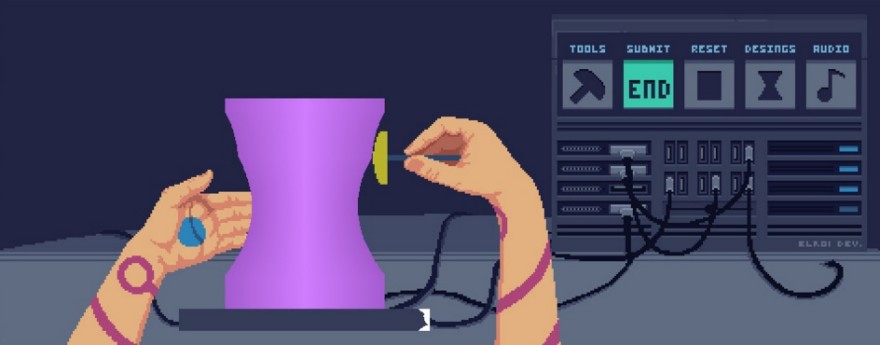When Ludum Dare announced the theme for its 35th game jam would be “shapeshift,” it triggered something within the mind of Deconstructeam’s creative director, Jordi de Paco: a memory about a short story he once read in the book Art & Fear: Observations on the Perils (and Rewards) of Artmaking (1993). This story, combined with a couple of other books on zen, and de Paco’s own interest in transhumanism, led to the creation of the studio’s game jam project, Zen and the Art of Transhumanism.
The aforementioned short story, incidentally, tells of a pottery master and his students. The master divides his students into two groups: one that will be evaluated based on the quality of their pottery, and the other that will be evaluated based on how many pottery pieces they can create. In the end, the best pottery creations came from the latter group. According to de Paco, this story had a profound effect on him. “[The story] changed my take on making games,” de Paco said. “I was so worried about making great pieces [that I was] always sabotaging myself, not being able to create freely due to the pressure… so this time I took it way too literally and made a lot of pots.”
Zen and the Art of Transhumanism, described as “a cyberpunk pottery game about improving the human race through technology,” puts players in the role of a robot tasked with making implants to fulfill the desires of various people. The implants, which are made in the same way as pottery, can do everything, from improving a person’s online social status, to making them stronger, to even extending one’s life.

But in a universe in which the technology has advanced to such a point, how was pottery, of all things, chosen to be implemented into the game? “I like to mix ancient arts with sci-fi,” explains de Paco. “Like a tattoo artist [that] burns silicon circuits into yakuza robots, that kind of concept feels very attractive for some reason, at least to me. Also I wanted to have a fun toy in my game, which I don’t usually have.”
Getting a new client, checking their profile to see what they desire, choosing the appropriate implant, then making and installing it is the basic gameplay loop of Zen and the Art of Transhumanism. At the table where the implants are made, players can choose which of the four carving tools they want (and often need) to use to shape the clay. A holographic pattern detector will turn green when the clay and implant shape match, or are roughly the same.
There was an idea to add a shop where players could do odd jobs to earn money, and then use their gains to buy new pottery tools and designs. It didn’t make it into the final game. At one point, there was also a time limit to the game, but was ultimately removed because it “detracted from the intended experience.” That experience is an interesting one, and one that may have some weighing the pros and cons of the game’s main idea: the relationship between the human race and technology.
“I’m happy with whatever answer a player extracts from the game as long as the game gave them something to think about,” said de Paco. This is something that de Paco and team previously achieved through violence and moral choices in Gods Will Be Watching. And as with that game, Zen and the Art of Transhumanism won’t be the last time we see transhumanism and science-fiction explored by Deconstructeam. Pottery, however, may have run its course.
You can download Zen and the Art of Transhumanism from the developer’s itch.io page. Their previous big release, Gods Will Be Watching, is available on PC, Mac, iOS and Android.
